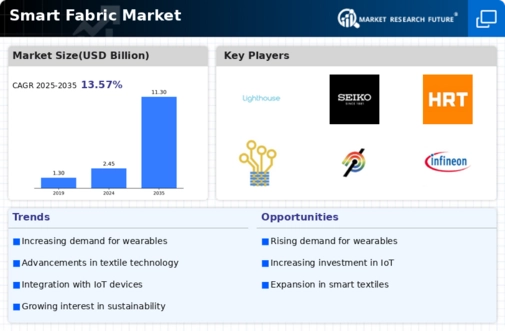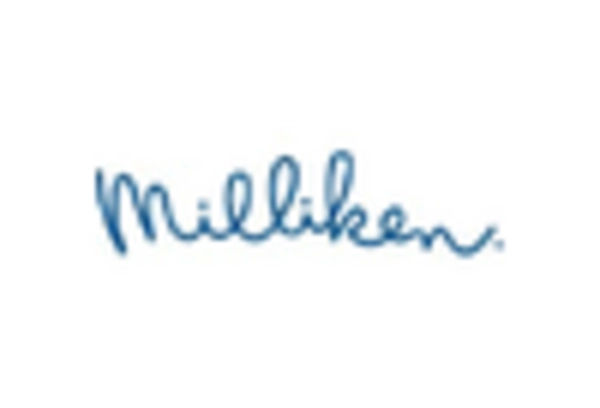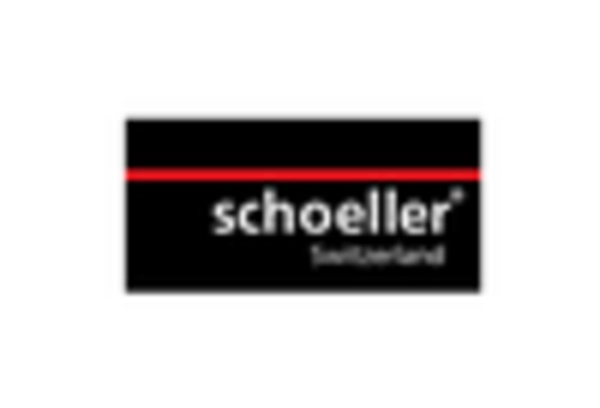The Smart Fabric Market is currently characterized by a dynamic competitive landscape, driven by technological advancements and increasing demand for innovative textile solutions. Key players are focusing on strategic positioning through innovation, partnerships, and regional expansion. Companies such as Textronics (US), DuPont (US), and Milliken & Company (US) are at the forefront, leveraging their expertise in material science and textile engineering to enhance product offerings. Their collective strategies not only foster competition but also stimulate market growth by introducing cutting-edge smart fabrics that cater to diverse applications, including healthcare, sports, and military sectors.
In terms of business tactics, companies are increasingly localizing manufacturing to reduce lead times and optimize supply chains. The market structure appears moderately fragmented, with several players vying for market share while also collaborating on technological advancements. This competitive environment is shaped by the influence of major companies, which often set industry standards and drive innovation through research and development initiatives.
In November 2025, DuPont (US) announced a strategic partnership with a leading wearable technology firm to develop next-generation smart textiles that integrate health-monitoring capabilities. This collaboration is significant as it aligns with the growing trend of health-conscious consumers seeking fabrics that not only provide comfort but also monitor vital signs, thereby enhancing the functionality of everyday clothing.
In October 2025, Milliken & Company (US) launched a new line of smart fabrics designed for the automotive industry, incorporating advanced sensors that monitor vehicle conditions. This move is indicative of the company's strategy to diversify its applications and tap into the burgeoning automotive sector, which increasingly demands innovative textile solutions for enhanced safety and performance.
In September 2025, Schoeller Textil AG (CH) unveiled a sustainable smart fabric that utilizes recycled materials while maintaining high-performance standards. This initiative reflects the growing emphasis on sustainability within the industry, as consumers and manufacturers alike prioritize eco-friendly solutions. The strategic importance of this development lies in its potential to attract environmentally conscious consumers and set a benchmark for sustainable practices in smart fabric production.
As of December 2025, current competitive trends in the Smart Fabric Market are heavily influenced by digitalization, sustainability, and the integration of artificial intelligence (AI). Strategic alliances are becoming increasingly vital, as companies collaborate to enhance their technological capabilities and market reach. Looking ahead, competitive differentiation is likely to evolve from traditional price-based competition to a focus on innovation, technology integration, and supply chain reliability. This shift underscores the necessity for companies to adapt and innovate continuously to maintain a competitive edge in a rapidly changing market.

















Leave a Comment